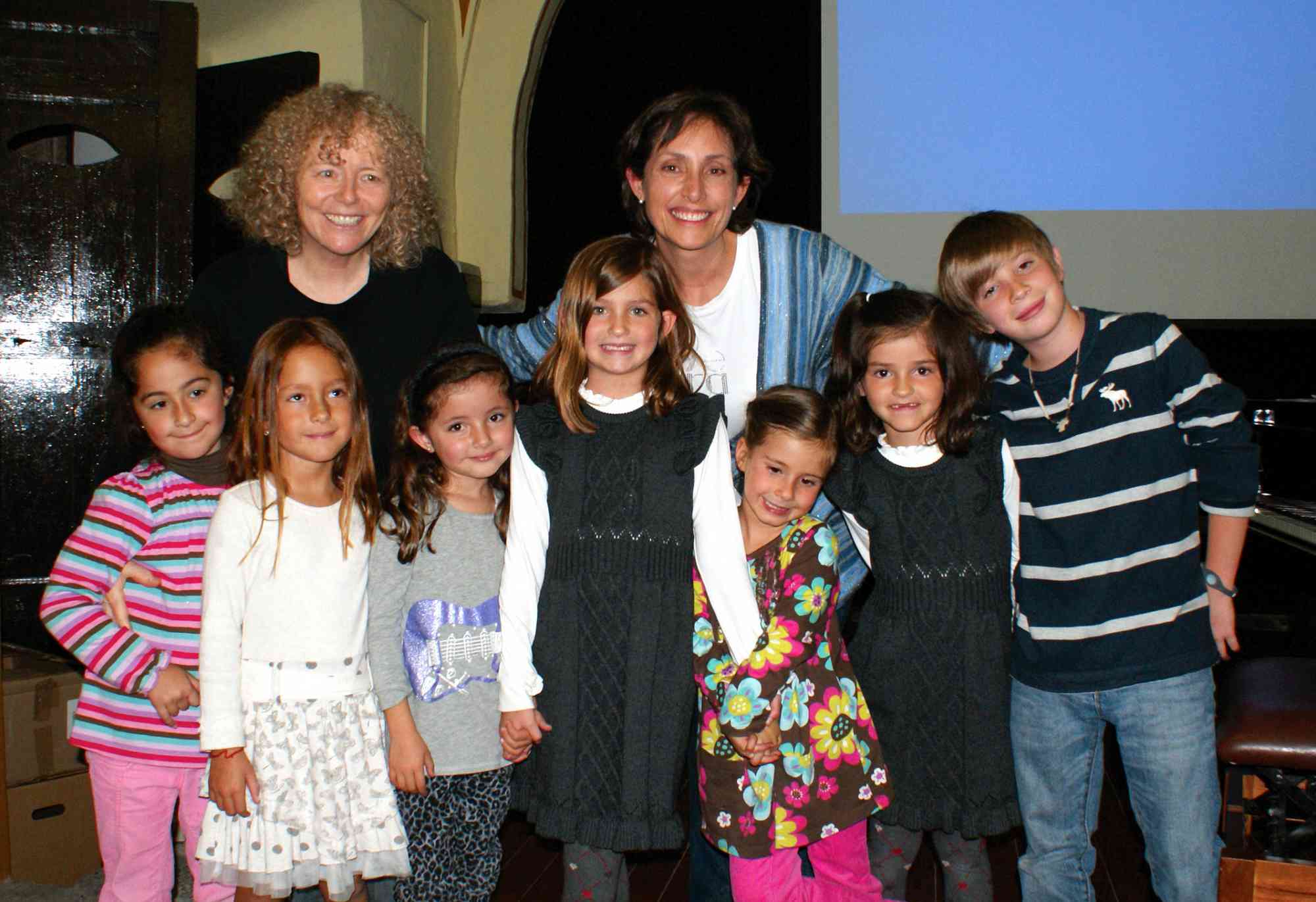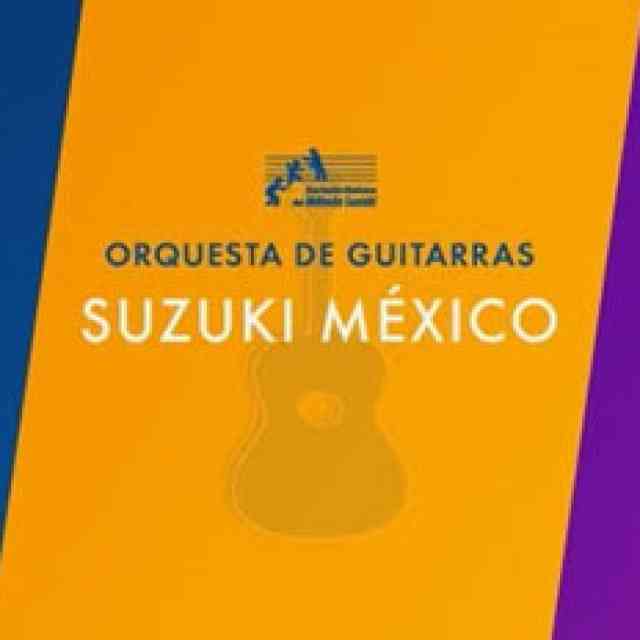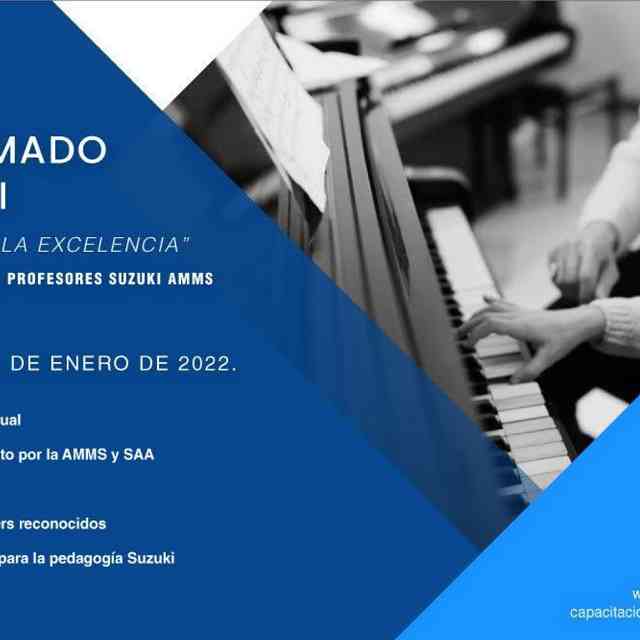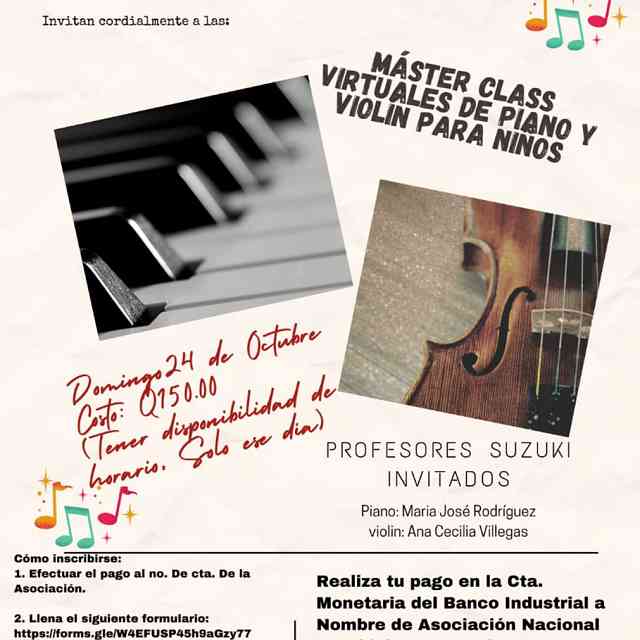It has become the custom in Mexico that wherever a Suzuki philosophy course is taught, piano students travel to participate in demonstration lessons, sometimes within the same city and at other times to a different state. Etna Diemecke has brought students from her city, Guanajuato, all the way to Xalapa, Guadalajara, and Mexico City, sometimes driving up to 11 hours to attend the course.
In the Mexican Suzuki Association, we have made it a point that one of us members of the board of directors should attend each Suzuki course given in the country, to assure that both the teacher trainer and the trainees have the best possible conditions. We also try to have students attend whenever possible, for it is an excellent experience for them and a great opportunity for the trainees to observe the teaching process.
In the colorful and beautiful city of Puebla in Mexico, at the Autonomous University of Puebla School of Arts, 54 music teachers were ready to discover Shinichi Suzuki’s philosophy. Seven piano students ages ranging from 4 through 10, their parents, and their Suzuki piano teacher all left Mexico City from the Eton School where they study and drove two-and-a-half hours to Puebla to be part of this very important three day workshop taught by Caroline Fraser, our Latin American Suzuki Piano Teacher Trainer.
The auditorium was all set with two beautiful grand pianos, and everyone was ready to start. Members of the board of directors of the university welcomed everyone for the opening of what would come to be a life changing experience for many of us, an adventure that would take us to experience Shinichi Suzuki’s vision and mission through Caroline’s experience and her own mission in life. The workshop began.
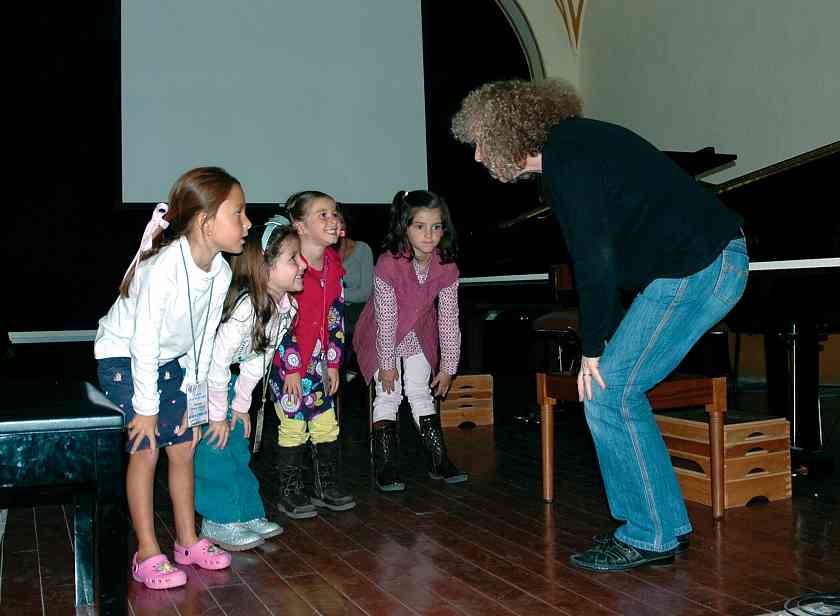
Group lesson with Caroline Fraser, using body parts to find pitch
After a two hour introduction to the philosophy, the piano students arrived, a little bit nervous, a little bit excited, ready to show what they have learned and ready to learn much more; lots of people were watching them, expectant, with judging eyes and minds as the observations started. One by one the students received their individual lessons from Caroline, completely wrapped up by this charismatic, angelical teacher. The audience was soon forgotten as the students were completely immersed in the music, inside this special student-teacher bubble. First were the little ones, four of them, who ended their performance with a group lesson in which they used all their skills in a fun activity. Then, the three more advanced students who were patiently waiting had their turn for individual and group lessons.
All of the students got their homework for the next day. Their parents were attentive, taking notes and lots of pictures, with me, their piano teacher, recording every moment of every class, receiving my own master class through my students’ lessons and afterwards receiving important feedback from Caroline, my beloved teacher.
The audience was full of questions, not quite understanding that these children had encountered Caroline for the first time in their lives. Nevertheless, it was evident that they shared a common language. They learned quickly, absorbing every sound and movement.
The second day, the students went to the auditorium for their morning practice, taking turns, helping each other, sharing, having a good time while doing their homework.
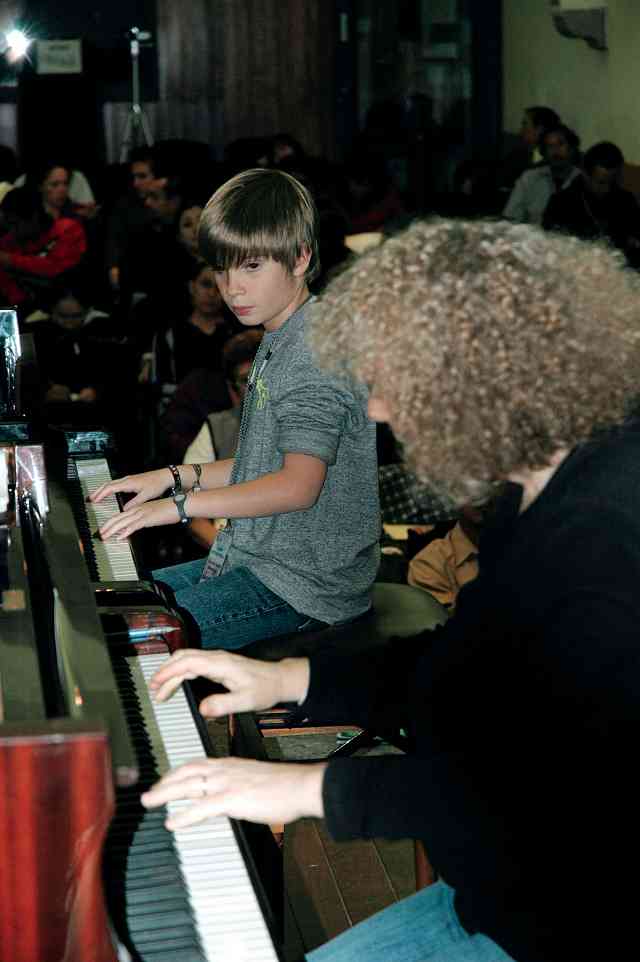
Patricio highly concentrated, learning from Caroline Fraser
The afternoon session started and the lessons went fantastically; there was a lot of improvement in every student’s playing. They had group lessons again, and Caroline was focused in taking them to a higher level of achievement. Everyone witnessed the magic of the method: learning music following the same steps that are taken when learning your mother tongue. We could see the capacity of the previously trained ear to perceive the most subtle sounds and play them back and reproduce the technique; the students were aware of how music is made, all in a natural way. The students were enjoying every moment of it, displaying big smiles, finding pleasure in their music making.
The parents had the opportunity to answer questions about their role in the piano practice at home and their view of the Suzuki method.
The third day, the audience had mixed feelings about this method, somehow wanting to see the traditional way of learning in which music theory is taught in an intellectual way, the way they had been taught. That afternoon, very clear examples of music theory concepts were shown through two outstanding group lessons. The beginners used stick notation for the Twinkle variations and theme, singing the musical form, then playing it and clapping the rhythm and beat; for the students all of these activities were fun games to play. We saw the advanced students ages 6, 7 and 10, all at the end of Book One, transposing through the circle of fifths, changing from major to minor mode. Suddenly, from the audiences came lots of oohs! and aahs! and then, tears of astonishment, of disbelief. It was magical.
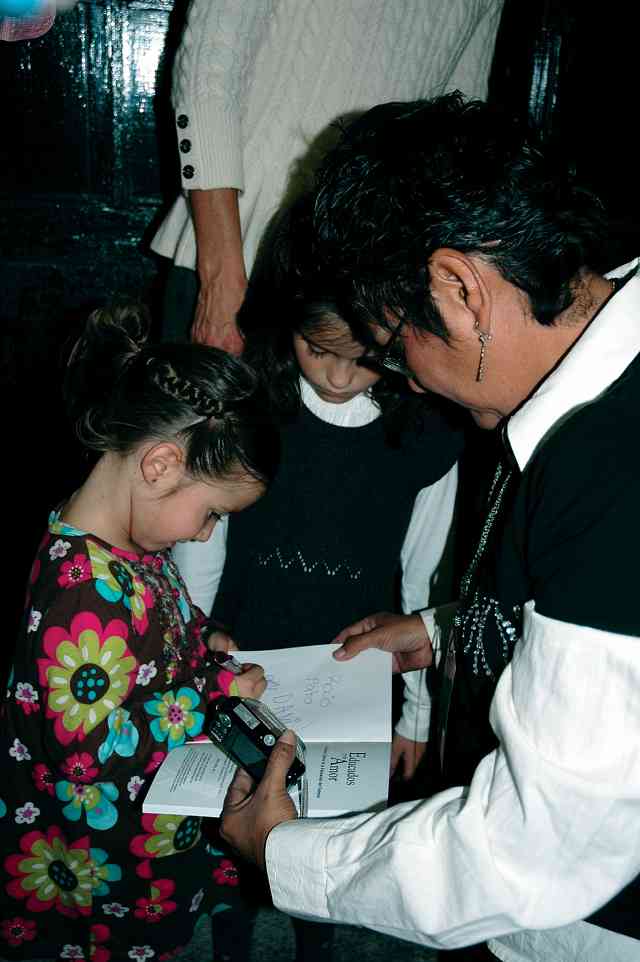
Emilia and María giving out their autographs
This marvelous experience concluded with a recital where students played their pieces with the newly acquired skills. The audience asked the children for their autographs; it was a big moment for them. They left that evening to go back home, highly motivated to continue with their piano learning.
The last morning, the president of the Mexican Suzuki Association, Gabriel Pliego, taught a couple of individual violin lessons and a very fun violin group lesson.
Caroline showed us the outstanding work that has been done in Peru in taking this philosophy to the most remote places, to children who live in poverty, children that have been abandoned and are now trained teachers volunteering their time to teach at the same institutions they grew up in. We were all very moved by the outreach that the Suzuki Method can have, and we were also motivated to do something in our own country. We felt an impulse to get started and touch children’s lives with music and through music.
The members of the board of directors of the university led the closing ceremony and Gabriel Pliego gave out the diplomas to all the participants, wrapping up what came to be a marvelous workshop.
Thank you to Gabriel for bringing Caroline to Mexico; thank you Porfiria for adventuring in bringing Caroline to the university in Puebla; and thank you to Caroline for your warmth, your love of your work, and for openly sharing with us all of your experience.
